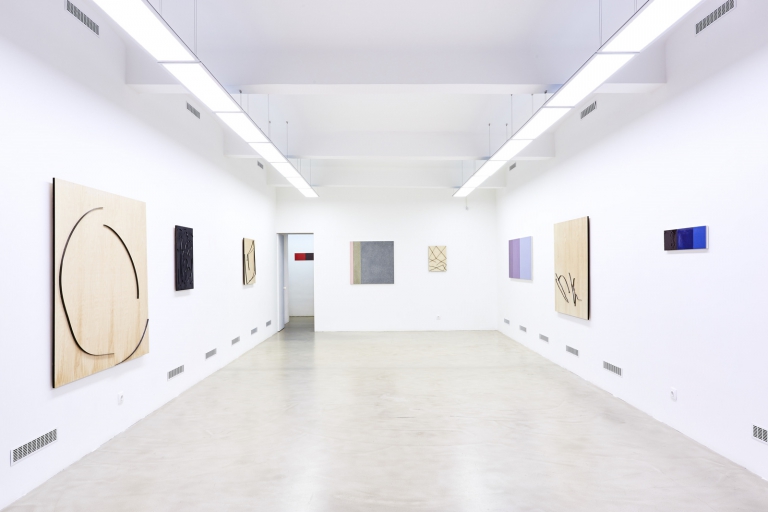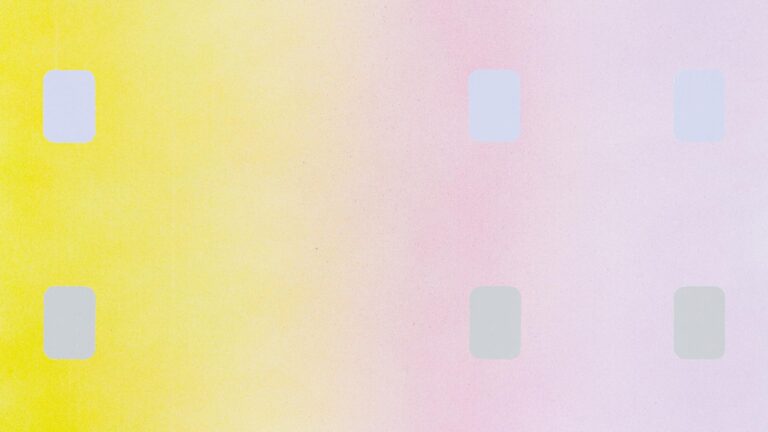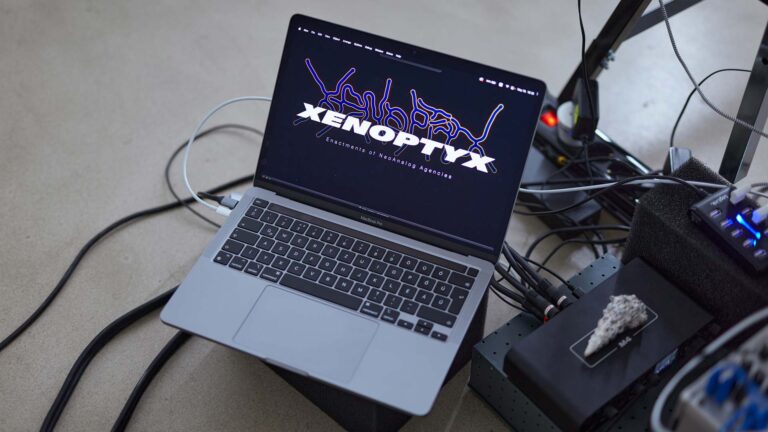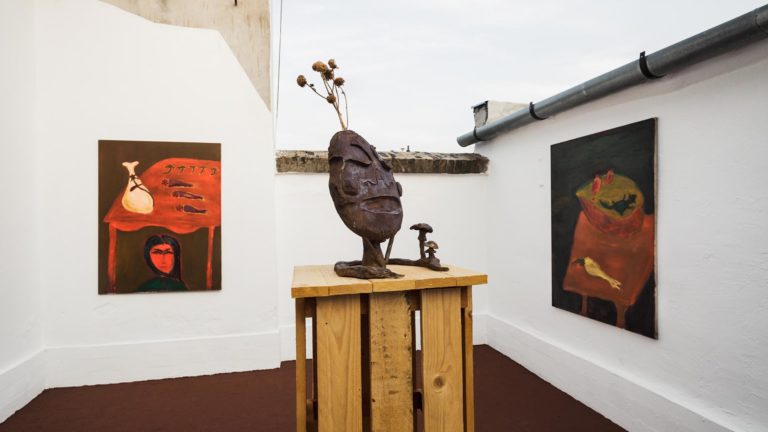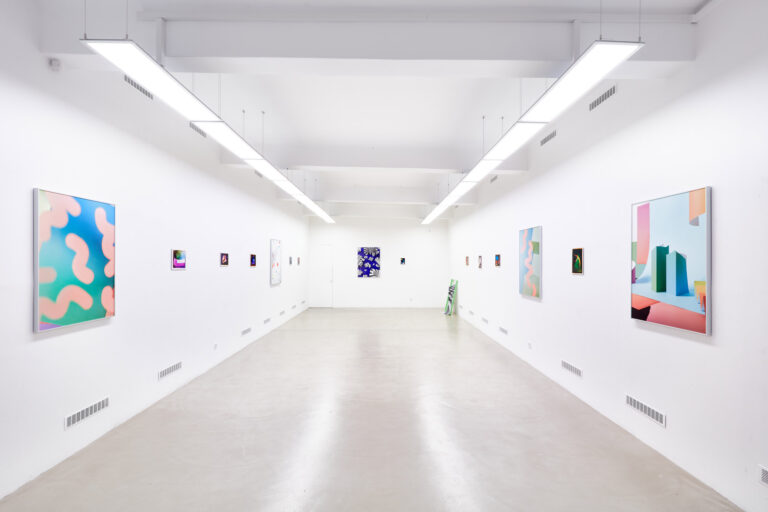“To trust in art is to trust in mystery”, writes Jennifer Higgie in The Other Side: A Journey into Women, Art and the Spirit World (2023), a book that explores women artists such as the medieval mystic Hildegard of Bingen, the visionary pioneer of abstract art Hilma af Kint, and the Swiss healer Emma Kunz, known for her energy field prints. What they all had in common was a strong spiritual experience and the ability to translate their clairvoyance and healing energies into art. Their work is an imprint of a contact with another dimension, the „spiritual world”, so it is not surprising that most of them have been late to enter the artistic canon. Not least, the hands of these artists were guided by energies and forces that are difficult to describe in traditional categories of visual art.
***
The exhibition Body Lotion by Réka Lőrincz also explores and connects borderlands. The starting point of the exhibition is – as the title suggests – the body (and its energy fields), but the (female) body is not only the subject of the exhibition, but also its medium. It is a medium in the sense that, like automatic drawing, the artist relied on the feelings and subconscious information conveyed through the body to create the works on paper entitled Healing Paintings. The installations, objects and sculptures on display are built from timeless elements, but they are also very much indicative of the period in which they were made. The visual and material culture of our present, the products of the beauty and fashion industries, are as recognisable as the centuries-old topos of our culture, the distinctive forms and colours of women’s art (from earthy colours to pink). Synthetic, mass-produced, low-status products blend well with organic, natural materials: peach pits with crystal, earthenware with plastic, selfie sticks with hair. This kind of synthesis, imbued with humour and subtle irony, is something we know well from the artist’s jewellery design practice.
The anthropomorphic installation, entitled One of Us, offers a range of interpretations. It is a hybrid totem, a paraphrase of Willendorf’s Venus, but it can also be seen as a contemporary fertility goddess, carrying fertility in the broadest – and not exclusively maternal – sense of the word. The basket, jug and basin used to form the body are all vessels for storage and containment. The female body and certain parts of it (uterus, ovaries, breasts, lips) can themselves be understood as vessels, as ‚receiving’ organs closely linked to fertility and creation (pro-creation) itself. At the same time, these parts are also power centres and are frequently targets of stigmatisation, tabooing, blocking, violence, and thus waiting to be unblocked (untied). The central element of the exhibition, the energetic centrepiece, so to speak, is the installation Living dreams, a bed made of straw and adobe by the artist and the branch-hands ending in claws (nails) rising above it. In addition to its myriad functions in everyday life, the bed has many connotations in art: dreams, birth and childbirth, intimacy, sex, erotic desires, vulnerability, violence, death. From Tracey Emin’s notorious unmade bed (My Bed, 1998), to Sarah Lucas’s mattress questioning binary gender identity (Au Naturel, 1994), to Ilona Németh’s red velvet double bed (Multifunctional Woman, 1996), feminist art has explored and subverted the layers of meaning of this everyday object in a variety of ways. But what is less common in exhibition spaces (with the exception of Ilona Németh’s installation) is that the bed exhibited here can be used, and in fact, it takes on its original function while being used. In the lying surface of the bed, which is made of straw and adobe, the artist has placed visible and hidden energy points, „switches”. While wheatgrass, sunflowers and peonies have been placed on the lying surface (where the root, navel and heart chakra are) under the textile cover, in a place not visible to the visitor, a visible ON/ON button in the side of the bed refers to the constant standby mode of the modern individual, his or her connection to the material world.
***
The global crises and general socio-political disillusionment of recent times have (re)increased the demand for alternative knowledge, for esoteric ways of understanding the world. Amongst other things, the faltering trust in Western medicine has brought with it a spiritual shift, which is also reflected in an increased interest in indigenous knowledge, experiences, alternative medicine and beliefs. Not only a series of self – help books, but now exhibitions and art theoretical writings are dealing with hitherto neglected topics such as the impact of spirituality on feminism and contemporary art, and long marginalised (mostly female) works are being included in museum collections. Art is perhaps one of the last areas where dimensions beyond the material world can be grasped, where the possibility of embracing forces that push the boundaries of human experience is opened up. The bed is charged. It is up to us to operate it. But to do so, we must give up our usual perspective and settle into a horizontal-meditative posture.
-Viktória Popovics
















































































